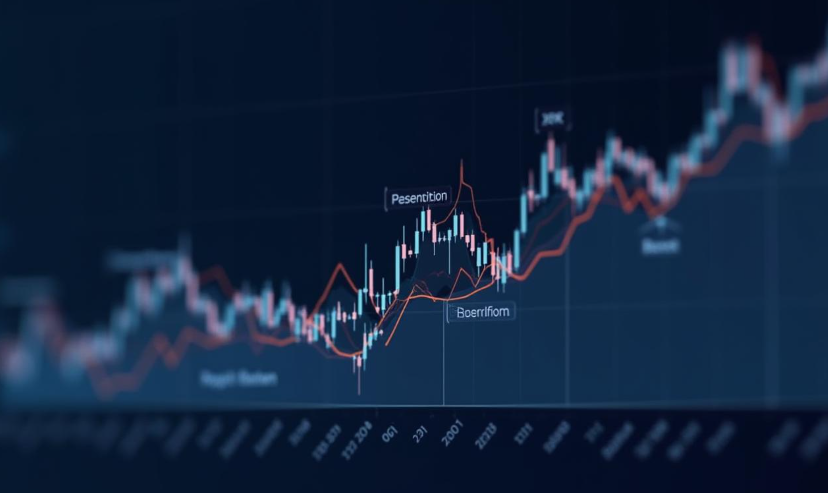XRP Price History: How It’s Evolved Over the Years
XRP, the cryptocurrency associated with Ripple, has experienced a fascinating journey since its creation. Unlike Bitcoin or Ethereum, which were designed primarily as digital currencies, XRP was developed with a specific goal in mind: facilitating fast, low-cost cross-border payments. Over the years, the XRP price has been influenced by various factors, from technological advancements to regulatory challenges and market sentiment. This article takes a closer look at how the XRP price has evolved over the years, analyzing key events that have shaped its value.
The Birth of XRP: 2012 – 2013
Ripple Labs, the company behind XRP, was founded in 2012. Initially, the XRP price was negligible, as the project was still in its infancy. Ripple sought to offer a more efficient alternative to traditional banking systems, using XRP as a bridge currency for international transfers. The first notable price activity occurred when Ripple’s XRP started being traded on small, niche exchanges in 2013, but the price was still under $0.01.
Early Growth and Volatility: 2014 – 2017
Between 2014 and 2017, the price of XRP fluctuated wildly. In 2014, it was trading below $0.01 for the most part, but by the end of 2017, XRP saw its first significant price surge, touching an all-time high of nearly $3.84 in January 2018. This surge in the USD to XRP price was driven by increasing interest in cryptocurrencies, including speculative buying, and Ripple’s growing partnerships with major financial institutions.
Ripple’s adoption by payment providers like MoneyGram and Santander contributed to the XRP price rising sharply. However, this period was also marked by heavy volatility, with the cryptocurrency market undergoing major corrections.
The 2018 Price Drop and Market Realignment
After reaching its peak in early 2018, the XRP price experienced a significant decline, as did most cryptocurrencies during the market-wide correction. By the middle of 2018, XRP had dropped below $1 and continued to struggle to regain its former heights. Despite Ripple’s continued business development, including further banking partnerships and the introduction of RippleNet for international payments, the market sentiment was not as optimistic.
This period marked a critical shift as many investors began to question the long-term value of XRP. The crypto market faced increasing regulatory scrutiny, and Ripple’s legal battles with the U.S. Securities and Exchange Commission (SEC) over whether XRP should be classified as a security created uncertainty around the XRP price.
XRP Price and the Legal Battle: 2020 – Present
In late 2020, the SEC filed a lawsuit against Ripple Labs, alleging that XRP was an unregistered security. This news triggered a significant decline in the XRP price, as many exchanges delisted the cryptocurrency, and institutional investors backed away. The XRP price dropped by more than 60% in a matter of weeks.
However, Ripple has continued to fight the lawsuit, and the XRP price has seen signs of recovery as the legal battle progresses. In 2021, XRP managed to regain some ground, briefly climbing above the $1 mark again. The price fluctuations are largely tied to the ongoing developments in the lawsuit, as any positive news related to Ripple’s legal standing often results in a price spike, while negative developments cause sharp drops.
Factors Driving XRP Price Movements
Several factors influence the XRP price beyond market trends. These include:
- Ripple’s Partnerships: Ripple’s relationships with major financial institutions, such as Santander, SBI Holdings, and MoneyGram, have been crucial in boosting the credibility of XRP as a bridge currency for cross-border payments. The launch of products like RippleNet has also fueled investor optimism about XRP’s utility.
- Regulatory Concerns: The ongoing SEC lawsuit and the broader regulatory environment around cryptocurrencies are key determinants of XRP price. Positive legal outcomes for Ripple tend to increase XRP’s price, while negative developments lead to sharp declines.
- Market Sentiment: Like other cryptocurrencies, XRP is also highly sensitive to market sentiment. Periods of bullishness in the cryptocurrency market tend to push the price of XRP upwards, while bear markets can see significant corrections.
- Technological Developments: Ripple’s ongoing work to improve XRP’s scalability, transaction speed, and overall utility in the financial industry continues to play a key role in shaping its price. Upgrades like the launch of XRP Ledger 2.0 and new use cases for XRP in decentralized finance (DeFi) could have long-term impacts on its valuation.
- Competition: As the world of cryptocurrencies evolves, XRP faces competition from other digital currencies like Stellar (XLM), Bitcoin, and Ethereum, which offer similar functionalities in cross-border payments and financial services.
The Future of XRP Price
The future of the XRP price remains uncertain, largely due to the ongoing regulatory challenges and market conditions. However, Ripple’s commitment to expanding its use cases and its partnerships with global financial institutions position XRP as a potentially valuable asset in the global payments ecosystem.
While it’s difficult to predict exactly where the XRP price will go in the coming years, factors like regulatory clarity, technological advancements, and the continued adoption of Ripple’s payment network will likely be key drivers of its long-term price trajectory.
Conclusion
The XRP price has gone through a series of highs and lows, with each shift influenced by Ripple’s business activities, legal battles, and overall market sentiment. As the cryptocurrency market matures and Ripple continues to innovate in the financial sector, the price of XRP could continue to evolve in fascinating ways. However, it’s clear that the journey of XRP is far from over, and its future will depend on a variety of both internal and external factors.






